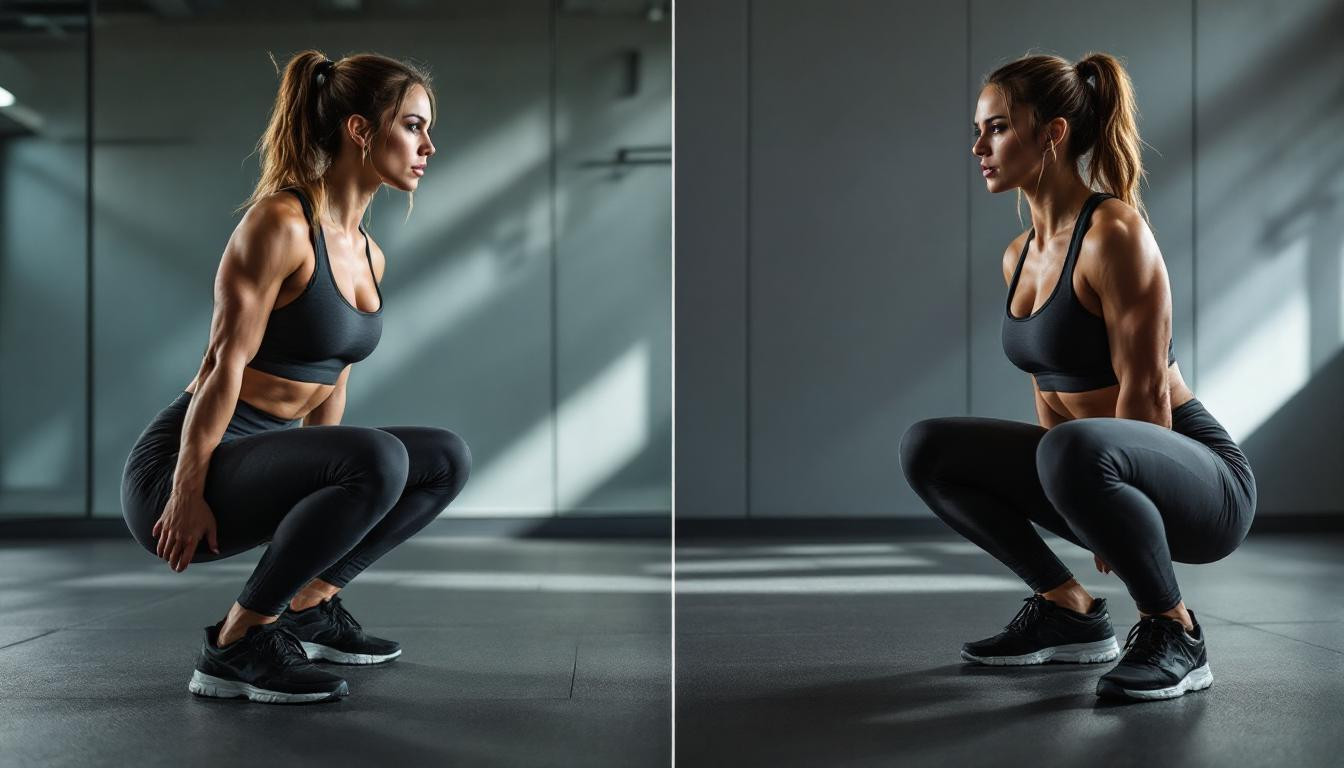Changing your squat stance by just a few inches can completely transform which muscles get the most benefit. Recent biomechanical research reveals that foot position and stance width don’t just change your comfort level—they dramatically shift which muscle groups activate by up to 61%. This game-changing insight is revolutionizing how fitness experts design lower-body training programs.
The science behind stance width
When it comes to targeting specific muscles, the width of your stance makes all the difference. “Wide stance squats increase gluteal activation by 13-61% compared to narrow stances, which is why powerlifters often adopt this position for maximum power output,” explains Dr. James Martinez, sports biomechanics researcher at Northwestern University.
The narrower your feet (about shoulder-width), the more your quadriceps dominate the movement. Meanwhile, taking a wider stance shifts emphasis dramatically to your glutes and inner thighs. This simple adjustment can be the key to breaking through plateaus in building strength and bone density.
Foot angle: the overlooked game-changer
Beyond width, the direction your toes point significantly alters muscle recruitment patterns. Turning your feet outward activates hip external rotators and allows for deeper gluteal engagement. Think of your feet as the foundation of a house—their position determines how the entire structure above them functions.
Emily Chen, a physical therapist specializing in athletic performance, discovered this firsthand: “After adjusting my clients’ foot positioning, many reported feeling muscles ‘wake up’ that they’d never engaged before, particularly in the lateral hip and glute regions that are crucial for preventing common injuries.”
Single-leg versus traditional squats
The most dramatic shift in muscle activation comes when comparing bilateral (two-legged) to unilateral (single-leg) squats. Research shows that single-leg variations significantly increase activity in:
- Gluteus medius (outer hip) – critical for stability
- Core musculature – for enhanced balance
- Ankle stabilizers – improving proprioception
This increased stabilizer activation explains why many rehabilitation programs incorporate unilateral training, similar to how Pilates focuses on core stability through controlled, often asymmetrical movements.
The unexpected connection to walking efficiency
Surprisingly, the muscle activation patterns developed through varied squat stances directly translate to improved walking mechanics. The gluteus medius—highly activated during wide-stance and single-leg squats—is the same muscle that prevents excessive hip drop during walking, potentially helping you burn more calories during everyday activities.
This connection between squat training and movement efficiency is like upgrading your car’s engine—the same distance requires less fuel but delivers more power. The sensory feedback from your feet during different squat stances also improves your foot’s neural adaptations to various surfaces.
Customizing your approach
To maximize your results, experiment with these evidence-based squat stance variations:
- For quad development: shoulder-width stance, feet forward
- For glute emphasis: wider stance, toes turned out 15-30°
- For stability training: progress from supported to unsupported single-leg variations
Remember that individual anatomy significantly impacts optimal positioning. The squat stance that activates your muscles most effectively is like a fingerprint—unique to you. Start experimenting today, and you’ll discover a whole new dimension of lower body training that could transform your results.
